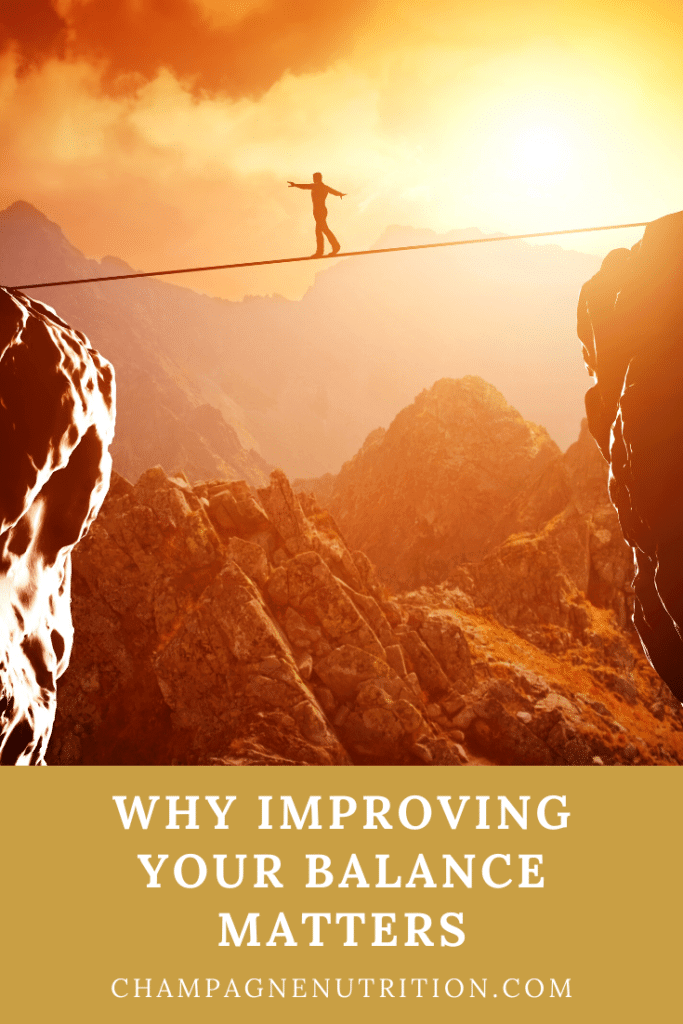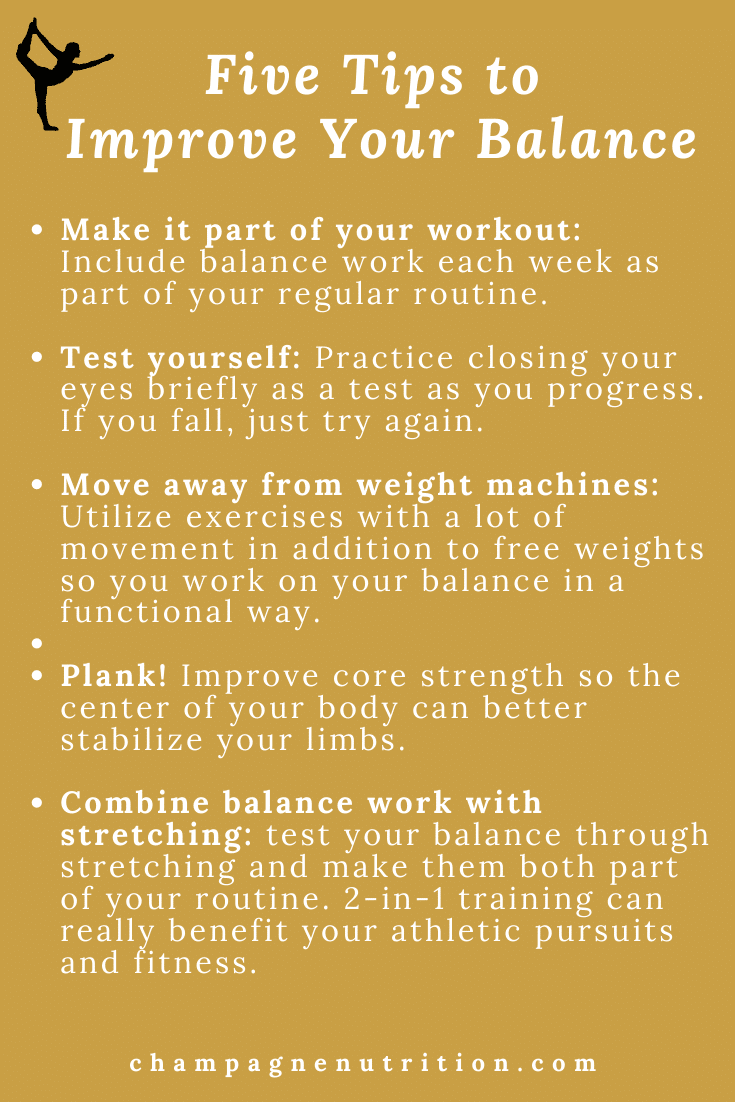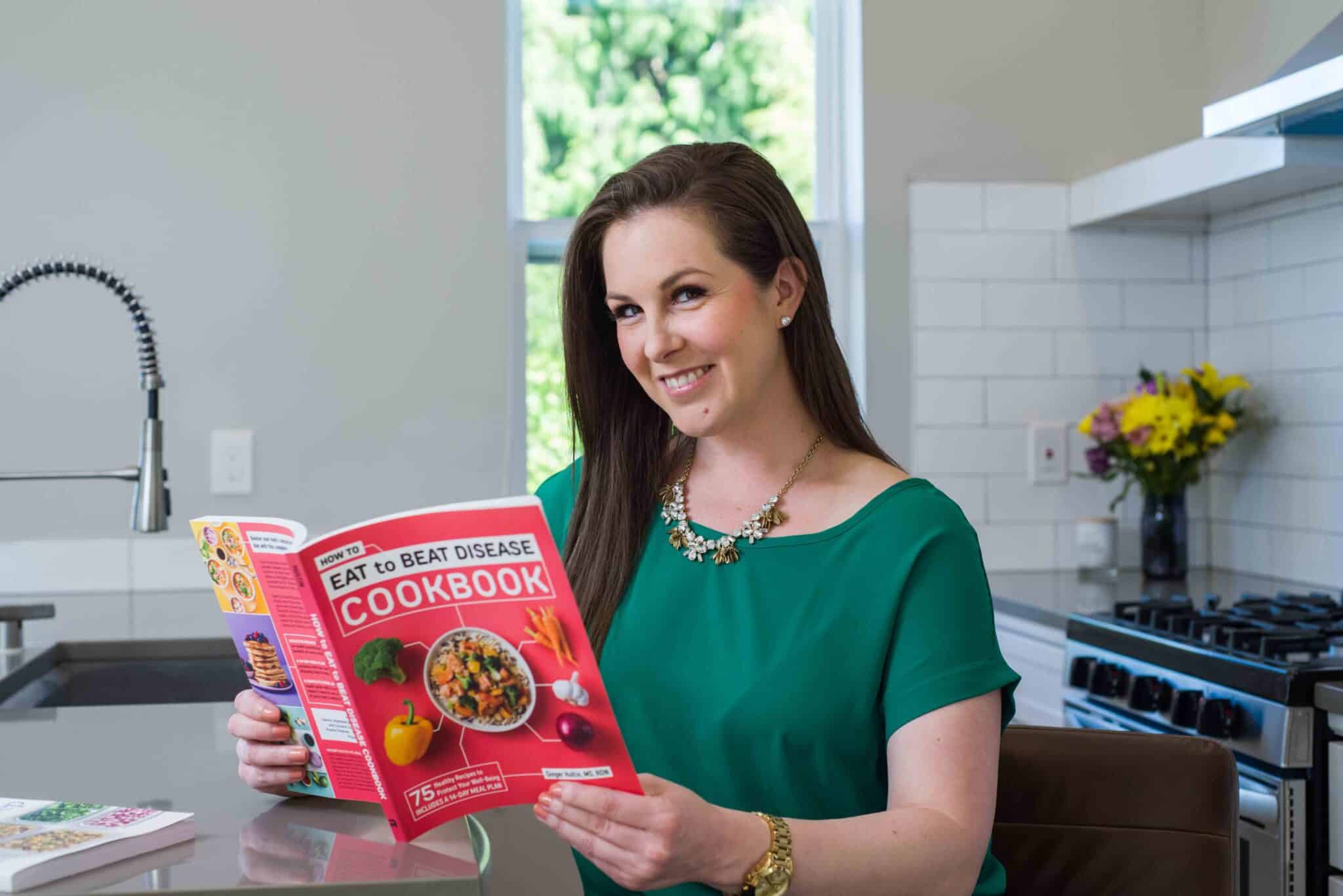Practice Balance Movements and Why it Matters
May 15, 2015 by Ginger Hultin MS RDN
Does anyone ever really go to the gym to work on their balance? It’s not exactly as if working on your balance gets you the heart health benefits of aerobic exercise or those toned arms you’ve been working so hard towards. But balance might just be the thing that makes or breaks your workouts in the long run. Keep reading to learn why improving your balance matters and how to practice balance.
I certainly don’t pack my workout bag in the morning excited to work on improving my balance. Let’s be honest, working on “balance” at the gym sounds like something my grandparents might be focusing on. Balance, like stretching, often gets forgotten as an important part of training and fitness. After finishing a game, class, or lifting session, it might seem anticlimactic practice standing on one leg for a few moments but this addition could be a game-changer for your workout and the more you learn about it the more you realize: balance is bad-ass. I am sharing why improving your balance matters and tips to help you incorporate it into your gym routine. If you want to practice balance – this one’s for you!

Why Improving Your Balance Matters
Balance work is helpful for the obvious activities like dancing or yoga (I’ve been to many a yoga class where I’ve had a hard time maintaining my own balance in a downward dog) but what about other activities? Balance can also improve performance for runners, lifters and in sports. Before you start thinking that you don’t need balance for running and walking, think about it…you never have both feet on the ground in these activities, therefore you are balancing your weight on one leg or the other.
Getting better balance is like building muscle; it takes practice and time. It is a learned skill for many; not everyone is born with it but it can be improved with repetition. Like strength training, balance has benefits including improved athletic performance, better posture, reduced risk of injury, and less joint and back pain.
Balance is something that is super important as we ace. While staying active and independent as you age may be something that is not on your radar right now, it shouldn’t be forgotten as an important factor and you will thank yourself for putting the time in now before you age. Functional Fitness continues to trend strongly, which means instead of working out for aesthetic purposes, the priority has shifted to developing strength and mobility for daily life. I love that people are working out for health and not appearance. So what can you expect from a functional fitness class?
Functional fitness is a trend toward using strength training to improve balance and ease of daily living. Functional fitness and special fitness programs for older adults are closely related. These classes will focus on core and improvising balance movements including abdominal exercises, upper and lower back as well as muscles that stabilize the hips. Core or trunk muscles create the center of balance for us all – learn more about where all of your core muscles are and how you can strengthen them here. Ideally, every fitness program will include a combination of cardiovascular, strength and balance work.
The Science Behind why to Practice Balance
Your balance, or equilibrium, is dictated by several systems that work together. The vestibular system is dictated by sensors in the head including the ears that control spatial orientation. The proprioceptive system includes receptors in the joints, muscles and connective tissue that tell your body where it is in space at any given time. Vision is the third system as the eyes assesses the surrounding environment. Because of this, it is an added challenge to balance with eyes closed and poor vision is associated with balance problems. Because of the complexity of balance systems, it is important to train and test your balance with a variety of conditions. For example, testing balance with eyes closed is an important tool. Balancing both standing up as well as in positions closer to the ground is a good challenge. Balance with movement incorporated works yet a different system. This type of training should be a part of your regular fitness routine.
Great balance requires good posture and a strong core and these outcomes in turn further improve balance which can help prevent injury during activities and elevate athletic performance. To incorporate balance into your fitness routine, try lifting free weights instead of using machines. Pay close attention to your core, tightening the abdominal muscles throughout all exercises. Include the simple exercises below in your daily fitness routine three times per week to see improvement. A combination of training in shoes and barefoot is helpful as these test different aspects of the balance you will need in daily life.

Five Tips to Improve Your Balance Today
- In any balance pose, practice closing your eyes briefly to test yourself. If you fall, just try again.
- Use free weights instead of machines and utilize exercises with a lot of movement (walking lunges, kettle bell swings)
- Plank on a bosu (half ball with a board attached) or exercise ball instead of the floor.
- Plank on the floor while lifting one leg or arm at a time, holding for several seconds.
- Combine balance work with your stretching: while balancing on one leg, holding the wall for support, bend the other leg at the knee directly behind you for a quad stretch and hold that foot with the hand of the same side of the body. Let go of the wall to test your balance during the stretch.
Before starting any new fitness plan, you should speak with your doctor about what is appropriate for you. I have a background in personal training and I can never emphasize enough how practicing good form is SO important. Be sure to work with a trainer to avoid any potential injuries and bring up why improving your balance matters. Do you have any favorite balance exercises I forgot here? If you don’t already, do you think you will start adding balance exercises into your routine? I’d love to hear from you!

Ginger Hultin,MS, RD, CSO
Thanks for visiting! If you're struggling with a cancer diagnosis, autoimmune condition, gut health problems, or even a medical mystery, nutrition can make a HUGE difference in your day-to-day life. I run a virtual, concierge private practice where I partner with my clients over time to help them improve their health through nutrition. Be sure to visit the blog for easy, plant-based, anti-inflammatory recipes and our "Resources" page for a variety of self-paced programs, books, e-books, and nutrition podcast episodes.
